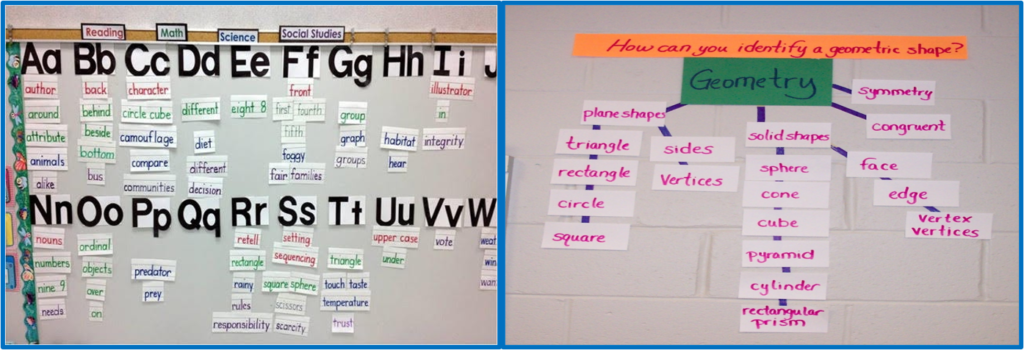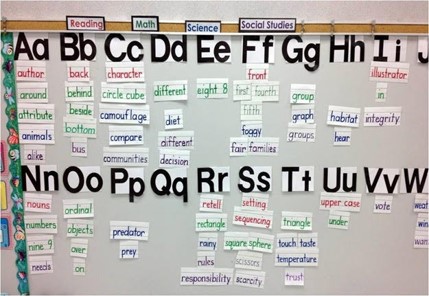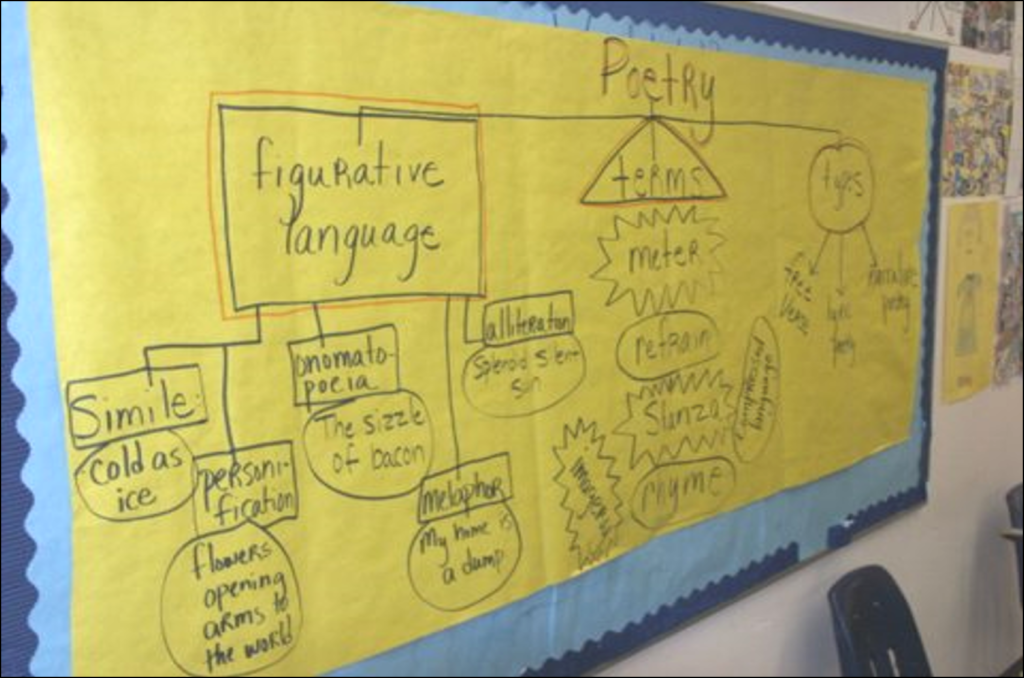Word Wall Ideas – Ready for an Interactive Classroom Word Wall Makeover?
September 22, 2020 February 1, 2025
What is a Word Wall?
Word Walls are organized collections of words placed on a wall or other surface in the classroom. They are excellent tools for building word consciousness in students through increased vocabulary interaction and social learning opportunities; especially as students make connections among important concepts and big ideas. Interactive Word Walls, vocabulary notebooks, and periodic reviews are all important ways to revisit and reinforce vocabulary over time.
What does a Word Wall look like?
There are several different types of Word Walls which serve different purposes and focus on different skills. For example, it is common for primary classrooms to display high-frequency Word Walls, but it is unlikely to find such a Word Wall in a secondary classroom.


Word Walls in classrooms take on many forms. They can be color-coded by content area on index cards that are affixed to the wall. They can be on chart paper, a display board, or a concept map. No matter the way you choose to display Word Walls, the words on the Word Wall must be large enough that they can easily be seen by all students in the room from wherever they are seated.
Regardless of the structure, all grade levels should have content area Word Walls on display.
How are Word Walls organized?
How many Word Walls are in a room may depend on how the content areas are organized, whether high-frequency words or retired Word Walls are utilized, or how many courses are taught by a single teacher. For example:
- Elementary classrooms may have one Word Wall for various content areas, color-coded for each subject. Additionally, there may be a high-frequency Word Wall.
- In secondary classrooms, there may be separate Word Walls for each course, as well as specialized Word Walls, such as testing words.
How to Use a Word Wall in the Classroom?
Word Walls can be effective learning tools, or they can be wallpaper. Even the most organized Word Walls won’t help students learn words unless they are used. The words displayed on the Word Wall should be words that you currently want your students to use and should come down and get replaced by new words when a new lesson or unit is introduced. The same is true for high-frequency Word Walls.

Use the words on the Word Wall to create Advance Organizers (i.e. Student Learning Maps and Concept Maps) to meaningfully distinguish and highlight important vocabulary concepts (keywords), characteristics (descriptions or examples), and categories (“chunks” of learning connected to Learning Goals).
How do I retire words from the wall?

Once students are using the words appropriately, the words can come down. When words come down from the high frequency or content Word Walls, they can go to a retired Word Wall elsewhere in the room, or in an interactive vocabulary notebook. Students should use the interactive vocabulary notebooks daily for new word learning and can use them for structured review, writing, word games, and retired words. They are especially useful when learning word parts.

How do I use Word Walls during remote learning?
Virtual Word Walls apply the same characteristics as physical ones. They are most impactful when students know where to find the tool and are expected to use it for a purpose (i.e. writing, review, or as a scaffold for an assignment). Word wall ideas for remote learning are:
- Create a dedicated location in your classroom (or classroom website) to display vocabulary from the current lesson and unit.
- The size and color of fonts and virtual backgrounds are chosen to enhance visibility, not create “visual noise” that detracts from students’ ability to locate and see displayed words.
- Avoid busy patterns and small and light-colored fonts (i.e. yellow) to maximize displayed vocabulary.
- Use a digital “Word Wall” explicitly during a lesson as a scaffold for the assignment and to promote wordplay during Learning Activities.
- Provide a consistent and easily accessible “virtual” location to display current vocabulary that is used by both the teacher and students in lesson instruction.
More Word Wall Ideas for Virtual Classrooms
- Create a Concept as an editable (or fillable) PDF.
- Try Milanote, Miro, or MindMup to create and manipulate concept maps and other word clusters virtually.
- Dedicate a space on the main home page of your Google Classroom (or another LMS platform). Create a separate page for words as they are archived.
- Flip your Word Wall activity to create a super-effective previewing strategy! Create an Advance Organizer for a unit (i.e. Student Learning Map) or a lesson (i.e. Concept Map) and use it to activate students’ thinking prior to the start of a lesson.
- Use virtual games for wordplay to provide students with multiple opportunities to interact with the words, and as periodic review to improve students’ storage and retrieval of word meanings.
Interactive Word Wall Activities and Games
Primary: LINGO
- Ask students to vote for words prior to the game. Digital Adaptation: Try dotstorming for easy card voting.
- Provide students with a blank LINGO grid (may be a downloadable form or sent home as a part of a packet).
- Students will practice writing each word anywhere they choose on the grid.
- Shuffle index cards with the words and call the words one at a time.
- Have students chant the spelling of each word and then cover it with an object. (Try Lima Beans as students may not be too tempted to eat them!).
- The first student to have a complete row covered wins LINGO.
- Students can clear their sheets and play again.
Intermediate: Scrabble Scramble
- Digital Adaptation: Use whiteboard spaces for your students.
- Each whiteboard should have digital “Post-It” notes for each letter of the alphabet. Some letters may need to be duplicated.
- On the first whiteboard, show students a scrambled up word from the concept map or one of your vocabulary clusters.
- Give the definition of the word or create a story passage about the word.
- Students take turns unscrambling the words, that is, moving the letters until they correctly form the word.
- Check students’ thinking by viewing everyone’s Google Jamboard by viewing the expanded frame at the top.
- Unscramble your word on the first whiteboard to show students the correct answer.
Secondary: Possible Sentences
- Give students a word bank of words to choose from, and ask them to use some of the words to create possible sentences, predicting what will be learned that day.
- The teacher displays and discusses the meanings of six new words critical to the lesson.
- persecution / famine / scarcity / prosperity / migration / exodus
- The teacher adds four related words that are familiar to most students to the above list.
- homelands / agriculture / survival / poverty
- Students work in collaborative pairs to look for words that are connected and create sentences before reading the text.
- Digital Adaptation: Try it with Padlet. The board can be organized as columns to cluster words and provide a place for the students to post their Possible Sentences.
Want more ideas on how to redesign your current vocabulary activities and strategies for your physical and virtual Word Walls? Join us for our upcoming Effective Vocabulary Instruction Training of Trainers Institute. Contact us today for a quote.
